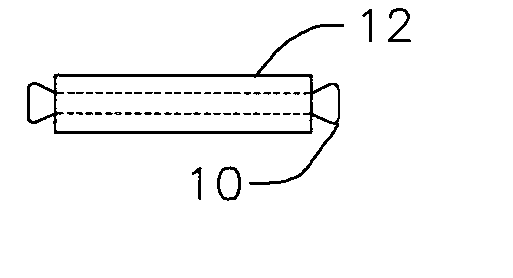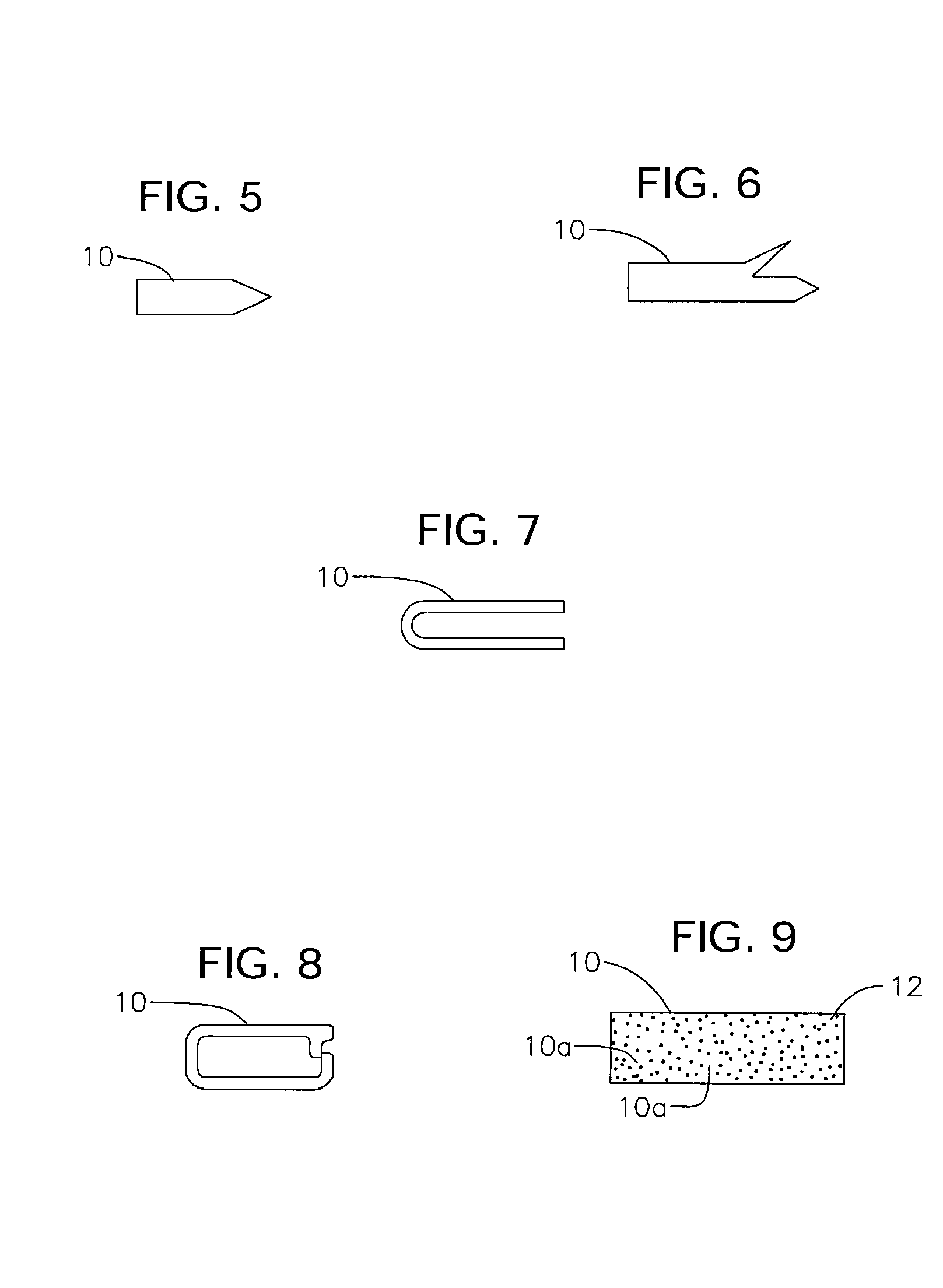Biodegradable polymer for marking tissue and sealing tracts
a biodegradable, tissue marker technology, applied in the field of biodegradable tissue marker and sealant, can solve the problems of not knowing how to use tissue marker or sealant as a drug delivery means, and unable to guarantee the migration of tissue markers, so as to improve the modulus of elasticity, slow down the release of drugs, and increase flexibility
- Summary
- Abstract
- Description
- Claims
- Application Information
AI Technical Summary
Benefits of technology
Problems solved by technology
Method used
Image
Examples
Embodiment Construction
[0095] How to achieve non-covalent bonding of ionic and non-ionic contrast agent with polymers such as PGA / PLA / PCLUPDO will now be described. Different techniques are employed to accomplish similar results in connection with covalent bonding.
[0096] The starting materials employed in this invention for synthesizing the novel tissue marker include poly(DL-lactide), inherent viscosity (IV) of 0.63 dL / g (where the solvent is CHCl3 and the concentration is approximately 0.5 g / dL at 30° C.), 50 / 50 poly(DL-lactide-co-glycolide, IV of 0.17 dL / g (hexafluoroisopropanol, concentration ˜0.5 g / dL at 30° C.) and 75 / 25 poly(DL-lactide-co-glycolides), having IVs of 0.44 dL / g (CHCl3, concentration ˜0.5 g / dL at 30° C.) and 0.69 dL / g (CHCl3, concentration ˜0.5 g / dL at 30° C.). These materials are commercially available from Birmingham Polymers, Inc., of Birmingham, Ala.
[0097] Further starting materials for synthesis of the novel tissue marker include poly(DL-lactide), IV of 1.6 dL / g (CHCl3, concentr...
PUM
| Property | Measurement | Unit |
|---|---|---|
| time | aaaaa | aaaaa |
| time | aaaaa | aaaaa |
| concentration | aaaaa | aaaaa |
Abstract
Description
Claims
Application Information
 Login to View More
Login to View More - R&D
- Intellectual Property
- Life Sciences
- Materials
- Tech Scout
- Unparalleled Data Quality
- Higher Quality Content
- 60% Fewer Hallucinations
Browse by: Latest US Patents, China's latest patents, Technical Efficacy Thesaurus, Application Domain, Technology Topic, Popular Technical Reports.
© 2025 PatSnap. All rights reserved.Legal|Privacy policy|Modern Slavery Act Transparency Statement|Sitemap|About US| Contact US: help@patsnap.com



